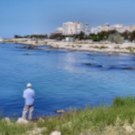The drought no one talks about
-
Recently Browsing 0 members
- No registered users viewing this page.
-
Topics
-
-
Popular Contributors
-
-
Latest posts...
-
18
Pride group founder jailed for rape of boy,12
I would hope, but know he wont, be put in the general population. I think then the rest of the guys would like to talk with him. -
57
Is it actually possible for a foreigner to buy land and run a tourism business in Thailand
But only found AN two days ago? And you did not know that Falangs cannot buy land? -
38
-
18
Bad dreams indicate early death??
Poor sleep causes you to not have the full REM cycles, which makes you remember most dreams and then obviously dreams in general can be considered bad dreams as the brain simply processes life itself. The rest of this claims nonsense. -
4
Economy Tourism, Exports Falter as Bangkok Bank Sounds Alarm on Economic Outlook
As long as the super rich continue to get rich the system will not change. A few technological changes and innovations here are there maybe, but otherwise the olde corruption and patronage systems will stay in place to the benefit of the 0.1% and the detriment of the country and most Thai citizens. Why are the "big" boys and girls pushing AI? Less need for workers!!! -
57
Is it actually possible for a foreigner to buy land and run a tourism business in Thailand
They are franchises, different to buying land
-
-
Popular in The Pub







.thumb.jpeg.d2d19a66404642fd9ff62d6262fd153e.jpeg)






Recommended Posts
Create an account or sign in to comment
You need to be a member in order to leave a comment
Create an account
Sign up for a new account in our community. It's easy!
Register a new accountSign in
Already have an account? Sign in here.
Sign In Now